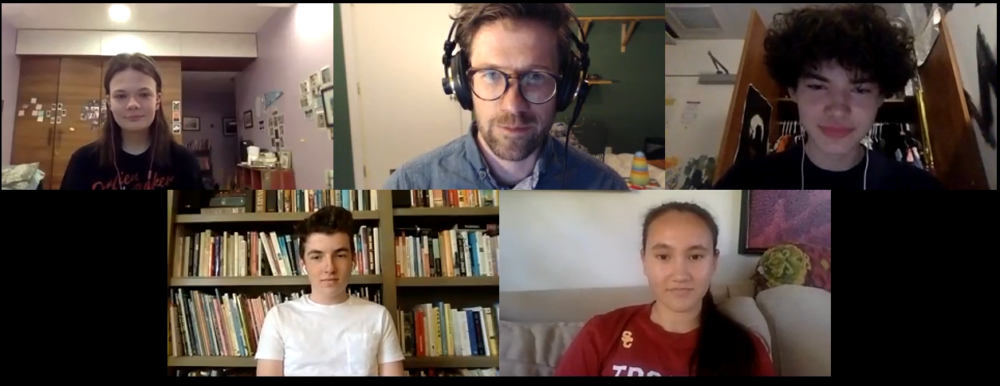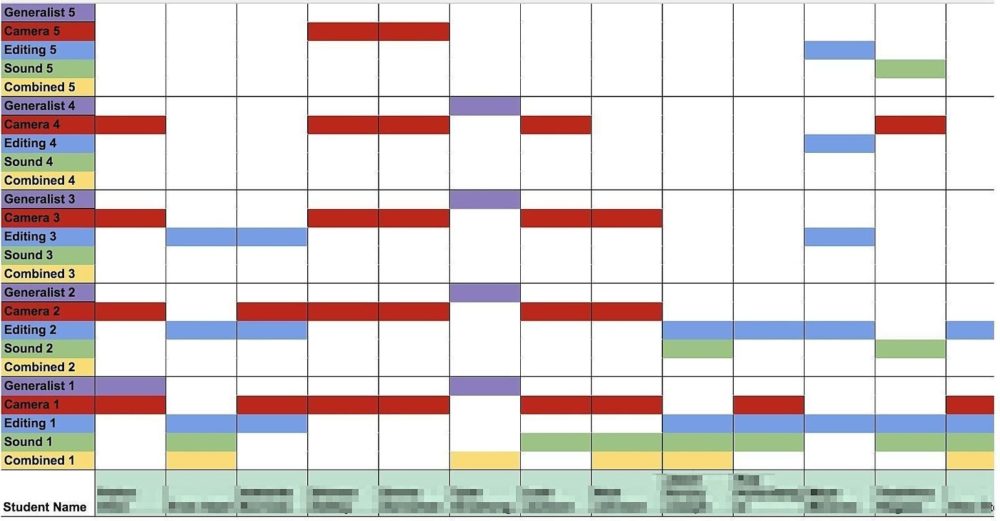13 Online Strategies for All Learning Environments
After 18 months of pandemic education, teachers and students have more experience learning online than ever before. They've been exposed to many of the advantages of online learning: liberating learning from specific times and places and paces, curating and creating content in new ways, and embedding more flexibility and student voice and choice into assessments.
While we had the chance to experiment with new ideas, it's important to emphasize that the Covid-19 pandemic also exacerbated many longstanding issues in education: systemic inequities, a focus on efficiency over effectiveness, and modes of instruction that limit student empowerment. Now is the time to reflect on the ways online learning can support our efforts to address these issues during and beyond pandemic education.
For decades, schools have been wrestling with how to design and offer diverse learning experiences that capture the flexibility, relevance, and rigor needed to ensure equitable outcomes for all learners. The 13 strategies below come from GOA's research and work designing learner-centered experiences for students and educators in online, hybrid, and in-person environments. We offer these tips with a clear purpose: thoughtfully applied, online learning can be a tool for learner empowerment.
13 Online Strategies for All Learning Environments
1. Keep Learning Hubs Online.

Well-designed online hubs make content, assignments, and instruction more flexible and accessible to students.
Pandemic education has meant that online spaces, be they in a Learning Management System (LMS), a website, or other platform, are our headquarters for learning instead of bricks-and-mortar classrooms. But, there are benefits to maintaining a robust online hub for our classes even when we transition back to primarily in-person learning. If content, instruction, assessments, etc. are centralized in a well-designed online space that serves as a partner to the in-person classroom, then students have the ability to access learning at any time and from almost anywhere, access that can support deeper learning for more students.
2. Enable Student Choice.
Empowering students to make important decisions as part of the learning process is a critical component of developing agency. The flexibility offered by online learning is an opportunity to prioritize student choice in learning experiences. Online learning can offer students a variety of learning pathways, or the opportunity to design projects that matter to them, or the chance to explore the world beyond the classroom and present their learning using tools they know well.
3. Diversify Instruction with Pre-Recorded Videos.
Delivering instruction via a pre-recorded video achieves several goals: it frees up class time for other learning activities, it offers students flexibility in absorbing content (pause, speed up, watch repeatedly), and it makes instruction available to students anytime and anywhere. It need not be the only mode for instruction, but it’s a strategy worth having and honing. Fortunately for teachers who might feel they don’t have the technical skills to make videos, pedagogy matters more than production value. Here’s a useful breakdown of research-based videomaking strategies.
4. Empower Students to Make Their Own Videos.
Videomaking gives students the opportunity to not just turn in their work, but explain it. Student-made screencasts allow students to present their work and explain their thinking. Short asynchronous video messages delivered via a tool like Flipgrid can serve as reflective exit tickets. These asynchronous modes of learning also support differentiation: students have time to reflect and compose, and they can exercise some creativity and build new skills in making their videos.
5. Support Student-Led Learning with Digital Portfolios.
Learning online makes it easier to document the learning process: most artifacts are digital and shareable. Portfolio-based learning, where students are responsible for curating evidence of learning, is an essential part of student-centered systems like competency-based learning. Digital portfolios using tools like Google Slides or platforms like Seesaw make gathering and sharing multimedia content easy. At GOA, our use of portfolios emphasizes process, not product.
6. Prioritize Formative Assessment with Online Assignments.
Online learning can move us away from a time-based assessment system and towards a learning and evidence-based assessment system. Using online quizzes, polling tools, asynchronous discussions, etc. as part of the learning process gives students more flexible and more diverse ways to practice. They can take a quiz multiple times. They can get immediate, automated feedback on their work. They can learn without the social pressure of always being assessed in a group setting. Consider how educator Breana Bayraktar stacks assignments online to support her students in preparing for synchronous or in-class learning.
7. Increase Flexibility with Content Playlists.
Deemphasizing pace in how we curate and create content supports differentiation and prioritizes mastery over coverage. A content playlist is an online resource that presents learners with a series of steps to complete a unit, project, or other learning experience. Online content playlists have several advantages when it comes to personalizing learning:
- Students can move more at their own pace.
- Content can be multimedia, giving learners the option to read, watch, or listen.
They can serve as pacing guides, supporting more self-directed learning.
8. Use Video Conferences for Targeted Support and Connections Across Distance.

Video conferencing can be used in any learning environment to connect one-to-one or with small groups of students. It's also a way to stay connected as students explore projects or experiences beyond the classroom.
An important insight from pandemic learning: We can be connected even if we don’t share the same physical space. This revelation should unlock a number of possibilities for what in-person school can look like. Video conferencing tools like Zoom can make targeted support more accessible and flexible, whether that’s via teacher-hosted office hours or individual conferences or small discussion groups. Video conferencing can support learning beyond the classroom: students can pursue independent projects, do fieldwork, participate in internships, or engage in community-based work, then use video conferencing for ongoing gatherings that aren’t tied to a particular location.
9. Differentiate Participation with Asynchronous Discussions.
Integrating asynchronous discussions can broaden our notion of “class participation” and make it more meaningful for more students. Asynchronous discussions like those embedded in most LMS’s or tools like Padlet and Jamboard offer a chance for students to share ideas via text, audio, or video. When paired with synchronous interactions in class or on video, asynchronous interactions offer a chance for more reflection, give students more time to compose and express their thoughts, and shift the power dynamic in discussion from favoring the extrovert or the more verbose.
10. Diversify and Improve Feedback.
We tend to think of feedback as generated by the teacher and applied by the student, yet meaningful feedback can take many forms, and strategic use of online learning supports diversifying feedback. Online quizzes offer immediate, automated feedback that helps students check understanding. Screencasts and multimedia tools like Mote make feedback via video or audio easier and more accessible to students and teachers. Asynchronous online learning supports high-quality peer feedback. Centralizing feedback in an online hub like a LMS keeps feedback organized and easy to refer back to.
11. Support Transparency with Open Online Gradebooks.
An essential element of grading for equity is that grading structures and learning outcomes are transparent and understandable to students. Online gradebooks, a core feature of LMS’s and other platforms, offer students the opportunity to monitor their work in real time and understand how different learning outcomes and assignments contribute to their success. In addition, configuring online gradebooks to align to learning outcomes and to prioritize mastery over completion support teachers in rethinking grading practices to emphasize learning over compliance. Online gradebooks are also a useful way to easily collect, visualize, and use data to better support students.
12. Move Project Management and Collaboration Online.
When students are asked to manage tasks individually or in groups, they have a chance to build lifelong skills. Using online project management tools like Kanban boards or greenlight spreadsheets gives students the responsibility to monitor their work while providing enough transparency for the teacher to understand where students are. Collaboration tools for remote teams like Microsoft Teams or Slack offer online communities where students can communicate and coordinate in and out of class. Using online spaces not only makes collaboration and project management easier for students, it exposes them to some of the ways people work and collaborate in the world beyond school.

Moving project management online, even with simple tools like this online spreadsheet, both empowers students to lead their own learning and offers the transparency necessary for teachers and classmates to be aware of where everyone is in their learning.
13. Partner with Families, Communities, and the World Beyond School.
While pandemic learning absolutely has made many critical relationships harder to build, it’s worth noting which interactions online tools can make easier. How might video conferencing make conferences and other important school events more accessible to families? How might we invite people into our classrooms via synchronous and asynchronous online tools to give our students an authentic audience for their work? How might online tools connect students to experts and professionals in the world beyond school who can contribute to their learning?
The future of education is less about adopting online learning just because we are better at it and more about using it to design learning experiences that move schools closer to agency, equity, and transfer. We must start asking the question, “What role does online learning play in school, now and in the future?” Aligning what we have learned during a crisis to what we know deepens student learning will determine the answer.
To learn more about high-quality online learning for any learning environment, explore these GOA resources:
GOA offers a number of ways to practice high-quality uses of online learning. Explore our professional learning course catalog, workshops for school teams, and custom services.


